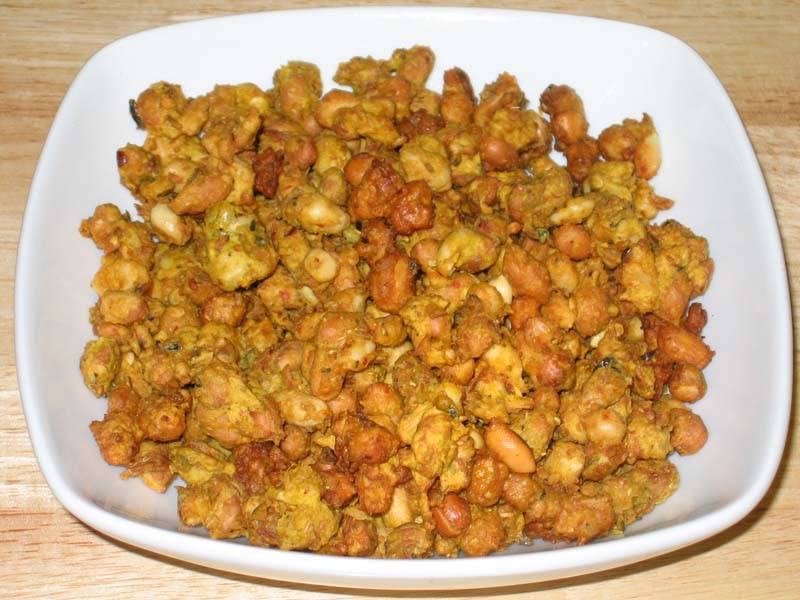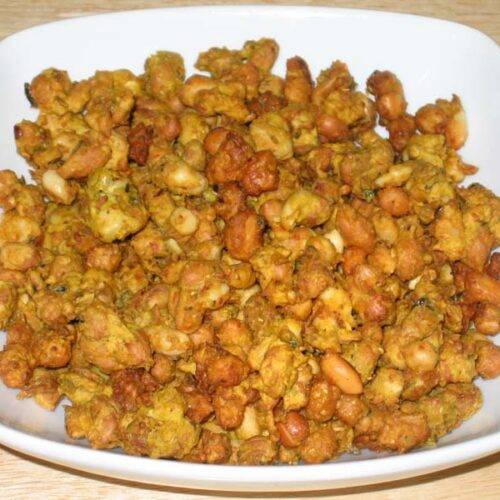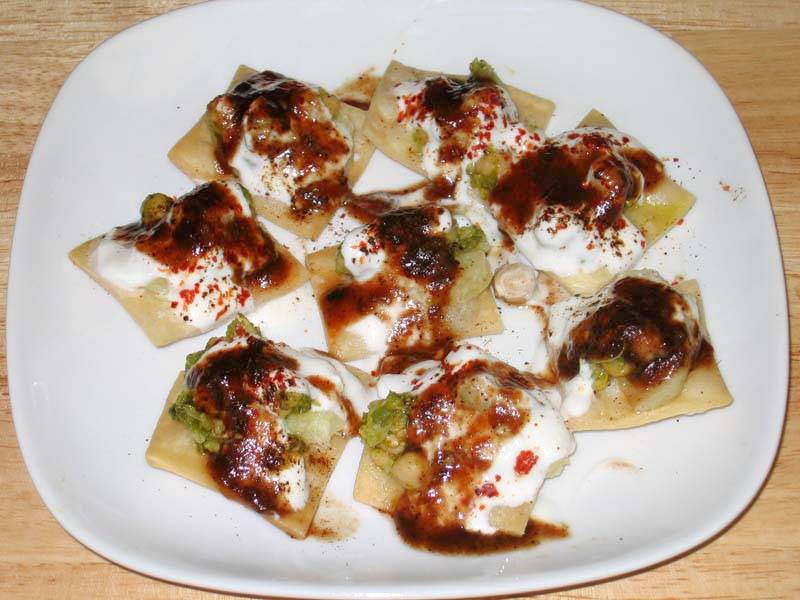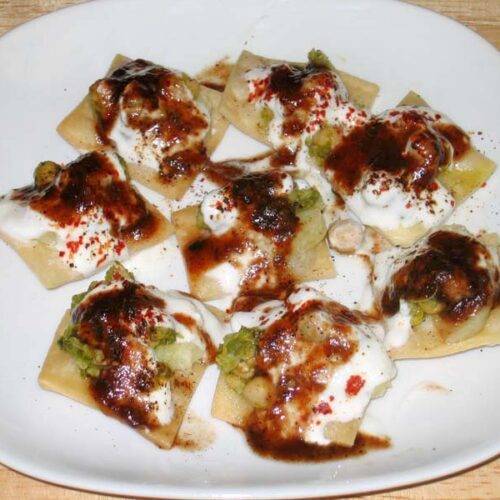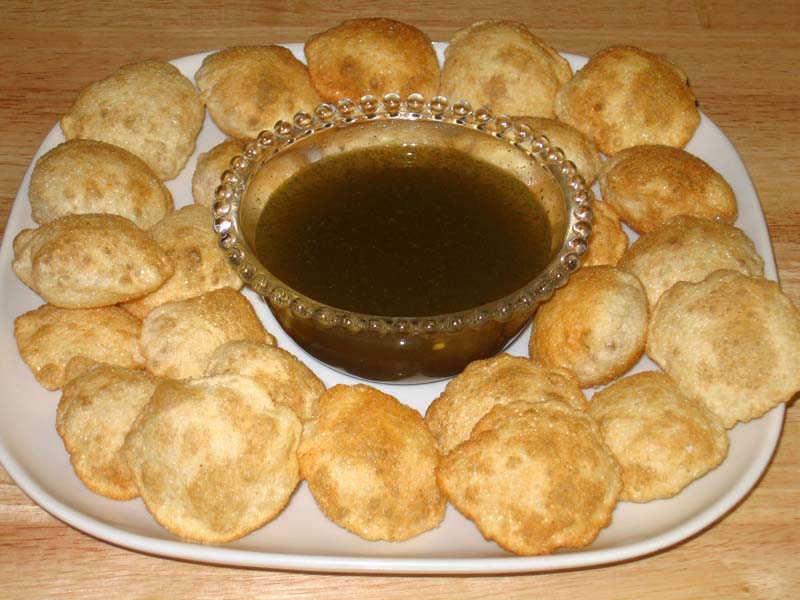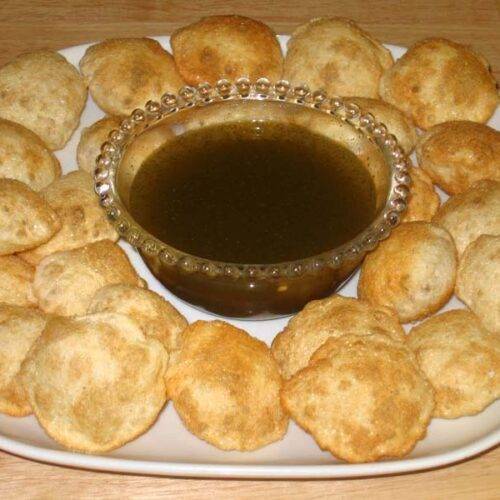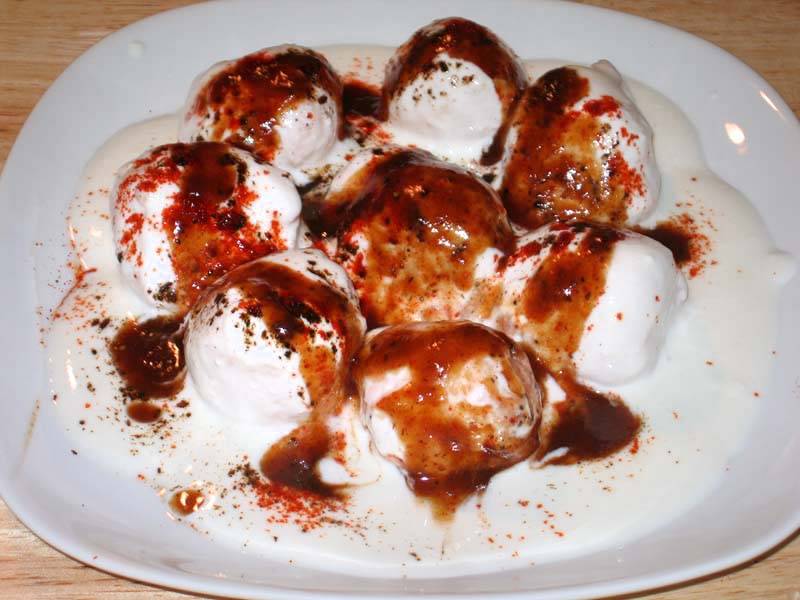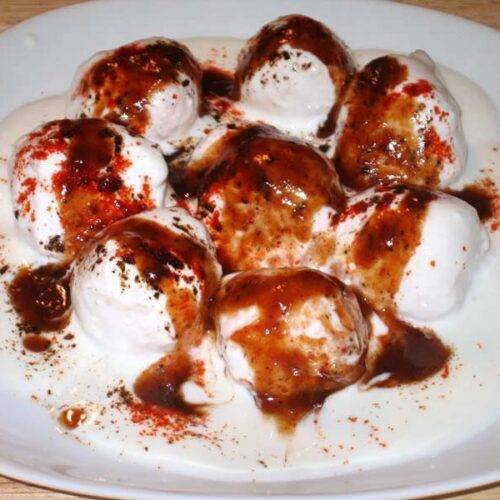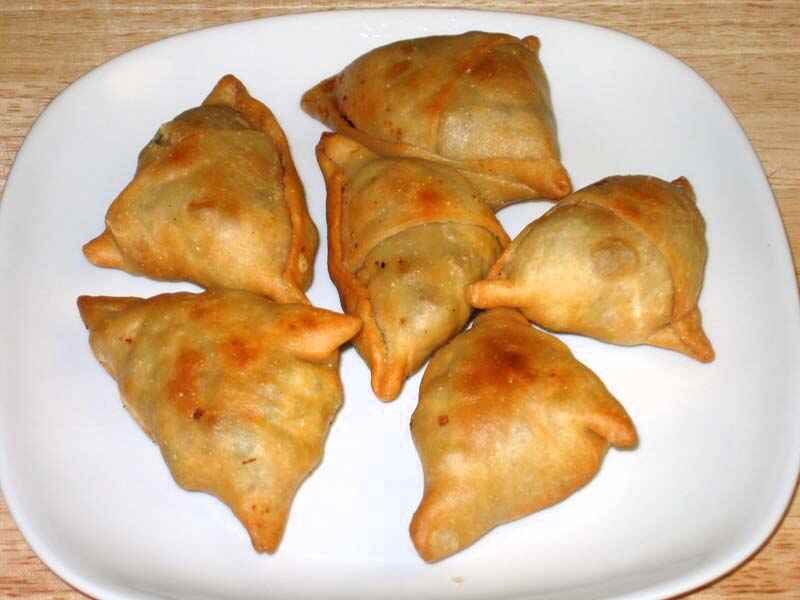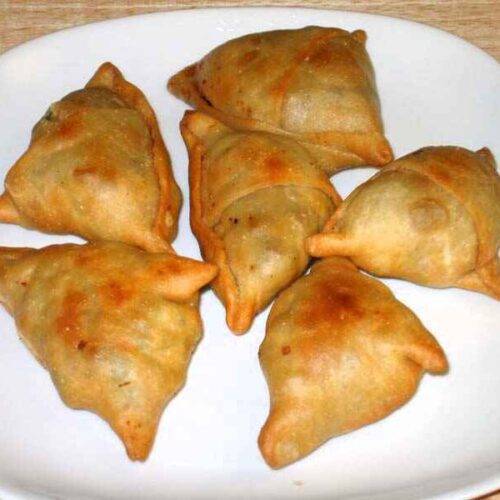Masala Peanuts
Ingredients
- 1 ½ cup Peanuts or 1/2 pound shelled peanuts
- ½ cup gram flour basen
- ¼ cup rice flour
- 1 Tbsp coriander powder dhania
- ½ tsp turmeric haldi
- 1 tsp red pepper
- ½ tsp black pepper
- 1 Tbsp green chili finely chopped
- ¼ tsp ginger powder soth
- 1 tsp salt adjust to taste
- ½ tsp mango powder amchoor
- ⅛ tsp citric acid
Also needed:
- 1 cup Water as needed
- Oil to fry
Instructions
- In a frying pan roast the dry peanuts on medium heat for 3-4 minutes and let it cool for few minutes.
- Mix all the ingredients together in a large bowl.
- Add water as needed making sure the spices and flour stick to the peanuts uniformly.
- Heat the oil in a frying pan on medium heat.
- The frying pan should have at least 1 inch of oil. To check if the oil is ready, put one drop of batter in the oil. The batter should raise to the top but not change color right away.
- put few drops of oil in your hand it helps droping the penuts before putting peanuts on the oil.
- While putting the peanuts into oil, loosen them with your fingers to make sure the peanuts are separated and do not form lumps. Peanuts should be separated while frying.
- Fry the peanuts until they turn light brown, turning them occasionally.
- When they are done cooking, take them out of the oil with a slotted spoon. Place them on a paper towel to absorb the extra oil.
- After cooling to room temperature, the peanuts should be crispy.
Notes
- Masala Peanuts can be stored for a month in an airtight container.
- Also see my recipe for Spicy Cashew, Almond brittle.
- These make a delicious homemade gift – pack it in a jar or candy bag.
Peanut Masala Recipe: A Spicy Delight
Masala Peanuts are delightful appetizers perfect for holidays and festivals, offering a crunchy, gluten-free snack option that satisfies both vegan and non-vegan palates alike. Peanut masala recipe is a beloved snack across India, offering a delightful combination of crunchy peanuts and aromatic spices. This masala peanuts recipe is a favorite among snack enthusiasts for its bold flavors and addictive crunch. Whether you’re hosting a gathering or simply craving a savory treat, learning how to make masala peanuts recipe at home is both rewarding and satisfying.
How to Make Masala Peanuts Recipe: Step-by-Step Guide
Step 1: Prepare the Peanuts
Start by selecting fresh, raw peanuts for the best results. Rinse them thoroughly under cold water to remove any dirt or debris. Then, pat them dry using a clean kitchen towel or paper towels.
Step 2: Dry Roast the Peanuts
Heat a non-stick pan over medium heat. Once the pan is hot, add the peanuts in a single layer. Dry roast them, stirring occasionally, until they turn golden brown and emit a nutty aroma. This process typically takes about 8 to 10 minutes. Keep a close eye on them to prevent burning.
Step 3: Prepare the Spice Mixture
While the peanuts are roasting, prepare the spice mixture. In a small bowl, combine masala peanuts recipe spices such as red chili powder, turmeric powder, cumin powder, chaat masala, and salt according to your taste preferences. Adjust the spice levels to suit your palate.
Step 4: Coat the Peanuts with Spices
Once the peanuts are roasted to perfection, transfer them to a large mixing bowl. While they are still warm, sprinkle the prepared spice mixture over the peanuts. Toss them gently to ensure that each peanut is evenly coated with the spices. Allow the peanuts to cool completely before serving.
Step 5: Serve and Enjoy
Your homemade masala peanuts are now ready to be enjoyed! Serve them as a standalone snack or pair them with your favorite beverages. Store any leftovers in an airtight container to maintain their freshness and crunchiness.
Tips for Making Perfect Masala Peanuts
- Experiment with different spice blends to customize the flavor according to your preferences.
- You can add ingredients like amchur powder for tanginess or garam masala for extra warmth.
- For an extra layer of flavor, consider adding roasted garlic or curry leaves to the spice mixture.
- Make sure to roast the peanuts evenly to achieve a uniform golden brown color and prevent any burnt spots.
- Allow the peanuts to cool completely before storing them to maintain their crispiness.
Variations of Masala Peanuts
Sweet and Spicy: Add a touch of sweetness to your masala peanuts by incorporating a bit of powdered sugar or jaggery along with the spices.
Herb Infused: Experiment with fresh herbs like cilantro, mint, or curry leaves to add a refreshing twist to your masala peanuts.
Nutty Crunch: Enhance the texture of your masala peanuts by tossing them with a handful of toasted cashews, almonds, or pistachios.
Benefits of Masala Peanuts
Rich in Protein: Peanuts are an excellent source of plant-based protein, making masala peanuts a nutritious snack option.
Good Source of Healthy Fats: Peanuts are high in monounsaturated fats, which are beneficial for heart health when consumed in moderation.
Packed with Essential Nutrients: Peanuts are rich in essential nutrients like vitamins, minerals, and antioxidants, contributing to overall well-being.
FAQs about Masala Peanuts
Can I use pre-roasted peanuts for this recipe?
While you can use pre-roasted peanuts, roasting them yourself allows you to control the level of crunchiness and ensures that they are freshly toasted.
How long do homemade masala peanuts stay fresh?
When stored in an airtight container at room temperature, homemade masala peanuts can stay fresh for up to two weeks. However, they are best enjoyed within the first few days to maintain their crispiness.
Can I make masala peanuts without oil?
Yes, you can skip the oil and dry roast the peanuts directly in a pan for a healthier alternative. However, using a small amount of oil helps the spices adhere to the peanuts more effectively.
For more delightful Indian recipes, explore Manjula’s Kitchen, where you’ll find a treasure trove of culinary inspiration ranging from traditional dishes to modern twists on classic favorites. Be sure to check out recipes like Aloo Gobi, Palak Paneer, and Chana Masala for a taste of authentic Indian cuisine.
If you enjoyed making these masala peanuts, why not try your hand at some other mouthwatering recipes from Manjula’s Kitchen? Vegetable Pakoras, Paneer Tikka, Aloo Gobi (Potato Cauliflower), Samosa, Mango Lassi
Explore these recipes and more for a culinary journey through the vibrant and diverse flavors of Indian cuisine.

